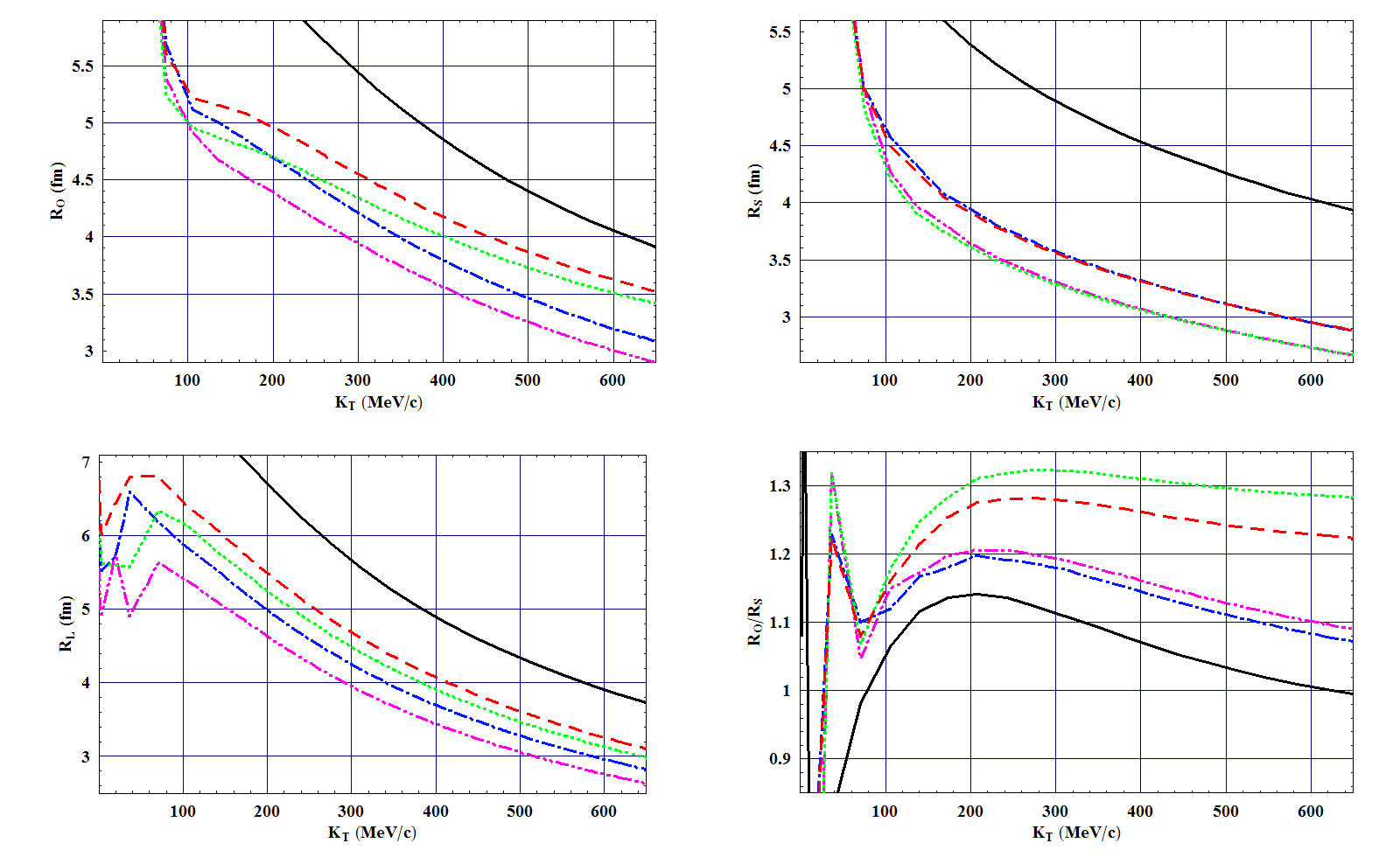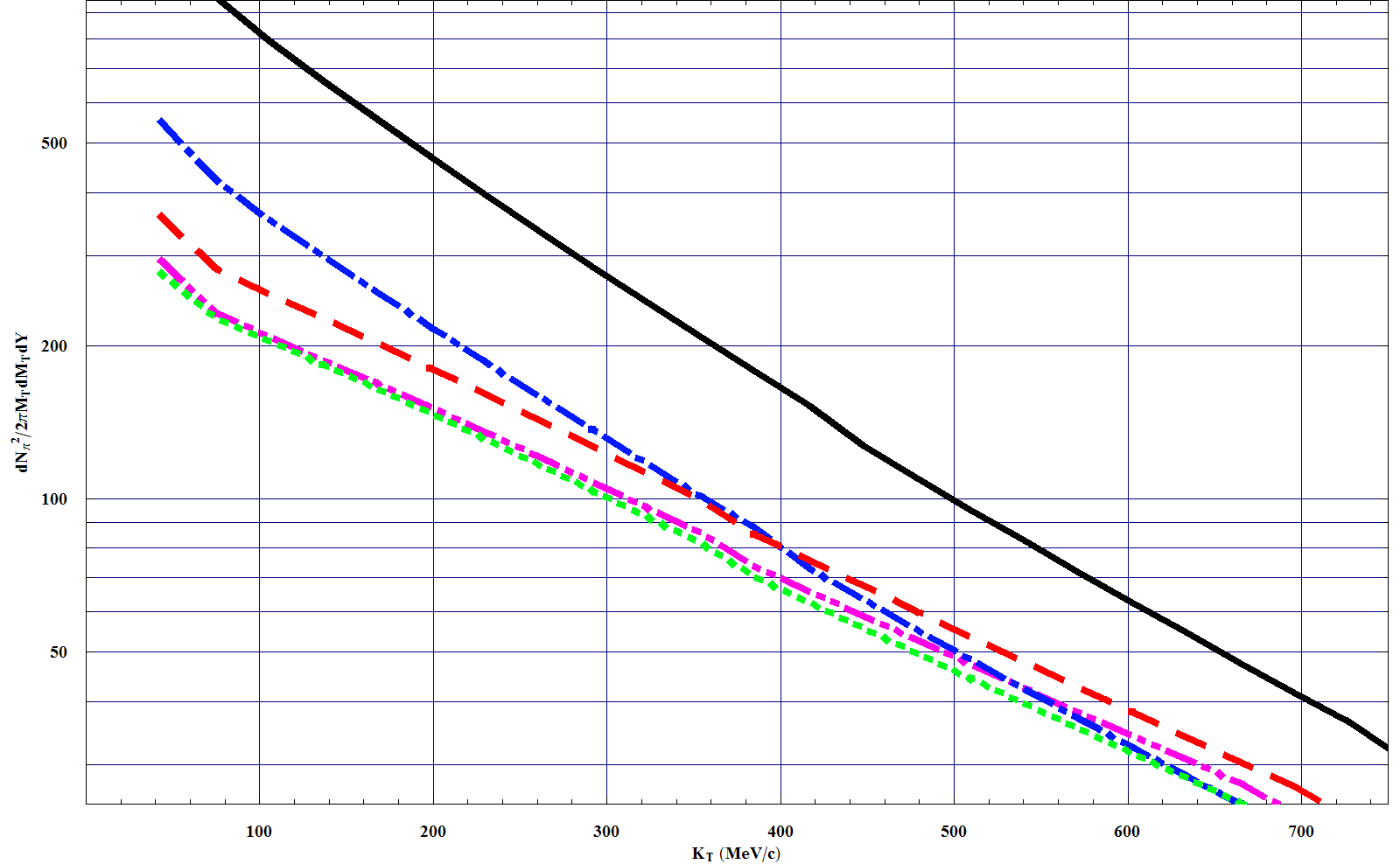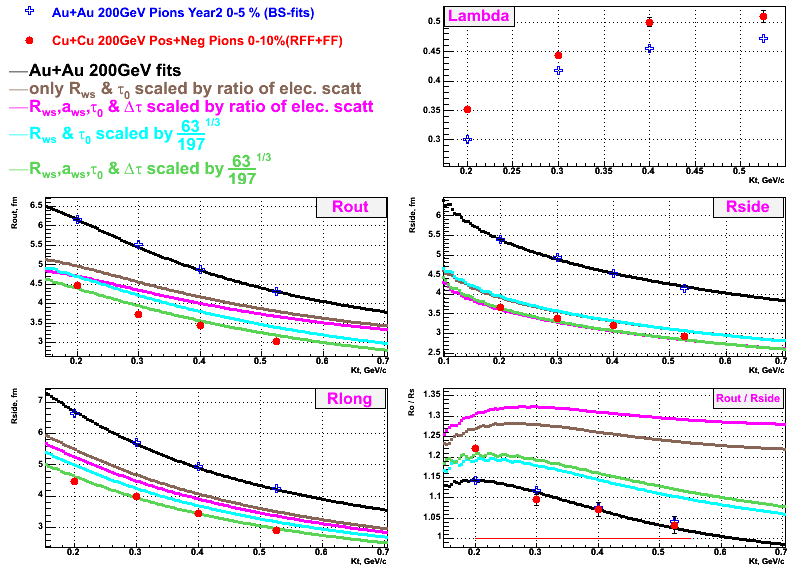
We took these parameters from our distorted-wave emission function (DWEF) fit to 200 GeV Au+Au and rescaled the space and time parameters. We did not modify the temperature, the flow or any of the potentials.
| Fit | Temp | etaF | Dt | RWS | aWS | stR0 | stR2 | stI2 | t0 | Dh | mp | Chi2 | Chi2 | Chi2 | Chi2 | Chi2 |
| (MeV) | (fm/c) | (fm) | (fm) | (fm/c) | (MeV) | (Ro) | (Rs) | (Rl) | (Spectrum) | (Total) | ||||||
| 36 | 222.1019 | 1.6391 | 2.66600 | 12.04930 | 0.717200 | 0.113310 | 0.724600 | 0.127670 | 8.135 | 0.997 | 123.884 | 20.17 | 13.40 | 31.10 | 4.52 | 69.19 |
We tried four different scaling strategies:
(1) We scaled only RWS and t0 using the ratio (1.37) of the measured electron scattering radii of 197Au and 63Cu (Red dashed line).
(2) We scaled RWS, aWS, t0 , and Dt using the ratio (1.37) of the measured electron scattering radii of 197Au and 63Cu (Green dotted line).
(3) We scaled only RWS and t0 using (ACu/AAu)1/3 = (63/197)1/3 = 1.46 (Blue dot-dashed line).
(4) We scaled RWS, aWS, t0 , and Dt using (ACu/AAu)1/3 = (63/197)1/3 = 1.46 (Magenta dot-dot-dashed line).



The Rout/Rside plot emphasizes that Rout is slightly overpredicted while Rside is slightly underpredicted. However, this calculation was a prediction, not a fit, and the ratio could be improved by slight adjustments of RWS and Dt. The Moral of this exercise is that space-time scaling works fairly well for variations of projectile mass at the same collision energy. Further, the implication is that nucleon number in the collision is more important that the initial size of the colliding systems.